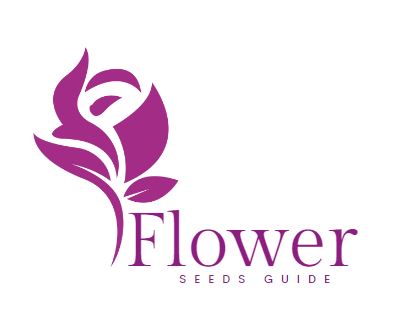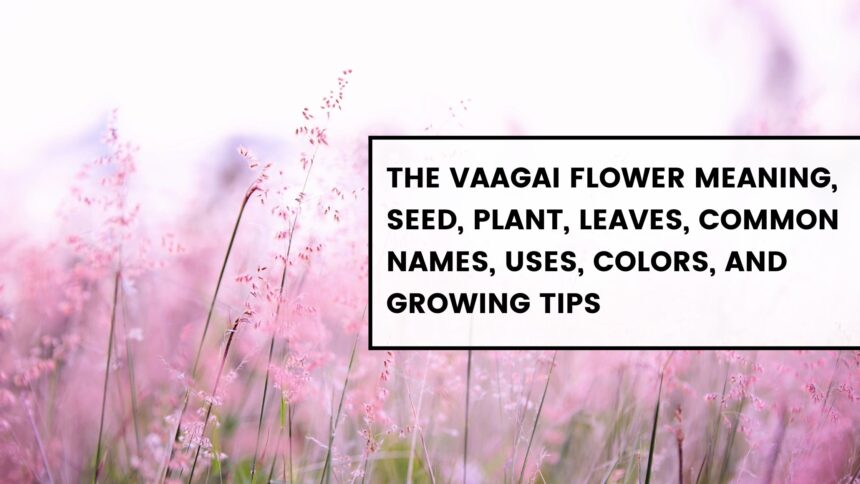The Vaagai flower (Albizia lebbeck), also known as the Indian Siris or East Indian Walnut, is a unique plant native to the Indian subcontinent. Revered for its cultural significance and medicinal properties, the Vaagai tree holds a special place in various parts of the world.
In this comprehensive guide, we will explore the meaning, seed, plant characteristics, leaves, common names, uses, colors, and effective methods for growing this versatile plant. Whether you’re an avid gardener or someone curious about its cultural importance, this guide will provide all the information you need.
Vaagai Flower Meaning and Symbolism
The Vaagai flower is often associated with strength and resilience. In some parts of India, it is seen as a symbol of protection and endurance, reflecting the plant’s ability to thrive in harsh conditions. Its connection to spiritual rituals and traditional medicine further adds to its cultural significance.
In Hindu mythology, the Vaagai tree is considered sacred, and its wood is used in various religious ceremonies. The flower’s delicate beauty contrasts with the strong, robust nature of the tree, making it a symbol of balance and harmony.
Seeds of the Vaagai Plant
The seeds of the Vaagai tree are dark brown, flattened, and oval-shaped, encased within a long, papery pod. Each pod contains several seeds, which are dispersed by the wind, making the tree a natural seed propagator. These seeds are easy to germinate with the right care, but they need to be properly scarified before planting to speed up germination.
Steps for Germinating Vaagai Seeds:
- Soak the seeds in warm water for 24 hours.
- Use sandpaper to scarify the outer coating, enhancing water absorption.
- Plant the seeds in well-draining soil and keep them in a warm, sunny spot.
- Water regularly but avoid over-watering as it can cause root rot.
Vaagai Plant Characteristics
The Vaagai tree can grow up to 20 meters tall and has a broad, spreading canopy. Its bark is dark brown, and the leaves are bi-pinnate, which means they have multiple small leaflets. The flowers are creamy-white and fluffy, with a fragrant scent that attracts pollinators such as bees and butterflies.
The tree is highly adaptable to various soil types and climates, making it a popular choice for both urban landscaping and rural agroforestry.
Vaagai Leaves
The leaves of the Vaagai tree are feather-like, with a symmetrical arrangement on either side of the stem. They are light green, turning darker as they mature. In traditional medicine, these leaves are used for their anti-inflammatory and antimicrobial properties, often being ground into a paste for topical application.
Common Names of the Vaagai Tree
The Vaagai tree goes by various names, depending on the region. Some of the most common include:
- Albizia lebbeck (scientific name)
- Indian Siris
- East Indian Walnut
- Woman’s Tongue Tree (due to the sound the pods make when they rattle in the wind)
- Frywood
Uses of the Vaagai Tree
The Vaagai tree has a wide range of uses, both medicinal and practical. Some of its key applications include:
- Medicinal Uses: The bark, seeds, and leaves are used in Ayurvedic and traditional medicine for treating respiratory ailments, skin conditions, and digestive issues.
- Wood: The wood is durable and resistant to termites, making it ideal for furniture, construction, and firewood.
- Environmental Uses: The tree is commonly planted in agroforestry systems as it improves soil quality by fixing nitrogen and providing shade.
- Cultural Significance: In many parts of India, the tree is planted near temples and is used in religious rituals.
Colors of the Vaagai Flower
The Vaagai flower is known for its creamy-white blooms, which appear in clusters. These flowers, with their subtle fragrance, add a touch of elegance to any garden or landscape. Though the flowers themselves are white, the overall tree offers a rich contrast of colors with its dark green leaves and brown bark.
Growing Vaagai Trees: A Complete Guide
Growing the Vaagai tree is relatively simple, provided the right conditions are met. Here’s a guide to help you successfully cultivate this tree in your garden.
1. Climate and Soil Requirements
- The Vaagai tree thrives in tropical and subtropical climates, with full sun exposure.
- It prefers well-draining soil but can adapt to a range of soil types, including clay, sandy, and loamy soils.
2. Watering
- Water the tree moderately during its growing phase but ensure the soil is not waterlogged.
3. Fertilization
- While the tree is hardy and doesn’t need much fertilization, using a nitrogen-rich fertilizer during the growing season can boost growth.
4. Pruning
- Pruning is essential to maintain the shape and health of the tree. Regularly remove dead branches to promote airflow and light penetration.
5. Pests and Diseases
- The Vaagai tree is generally resistant to pests but can occasionally be affected by aphids and scale insects. Use organic insecticides if necessary.
FAQs about Vaagai Flower and Tree
What is the significance of the Vaagai tree in Indian culture?
The Vaagai tree is considered sacred in India and is often associated with strength and resilience. Its wood and flowers are used in religious rituals.
How long does it take for a Vaagai tree to grow?
The Vaagai tree takes about 5-7 years to reach full maturity but can start flowering within 2-3 years under ideal conditions.
Can the Vaagai tree be grown indoors?
Due to its large size, the Vaagai tree is not suitable for indoor planting. However, it can be grown in spacious outdoor gardens or parks.
What are the medicinal uses of the Vaagai plant?
The Vaagai tree is used in traditional medicine to treat respiratory problems, skin conditions, and digestive issues. The bark, seeds, and leaves are the most commonly used parts.
Conclusion
The Vaagai flower and tree hold immense value, both in terms of their beauty and their practical uses. From its symbolic meaning to its wide-ranging applications in traditional medicine and agriculture, the Vaagai tree is a versatile plant that can thrive in diverse environments. Whether you’re looking to grow it for its aesthetic appeal, medicinal properties, or cultural significance, the Vaagai tree is a valuable addition to any landscape.
Call to Action
Start your gardening journey with the Vaagai tree today! If you found this guide helpful, consider sharing it with fellow plant enthusiasts. For more tips on growing unique plants, explore our other guides!

